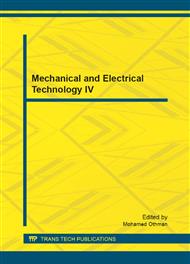[1]
Zhou Neng-fa, The language features and architecture of B-Prolog, Theory and Practice of Logic Programming, Vol: 12, pp.189-218, JAN (2012).
DOI: 10.1017/s1471068411000445
Google Scholar
[2]
Xu Ya-yin, Ge Cheng-hui, Pu Qun, Design and implementation of QH-PROLOG compiler, Journal of Tsinghua University, (1988).
Google Scholar
[3]
M. Carro, J. Morales, H. Muller, G. Puebla, and M. Hermenegildo, High-Level Languages for Small Devices: A Case Study In Compilers, Architecture, and Synthesis for Embedded Systems, ACM Press/Sheridan, pp.271-281.
DOI: 10.1145/1176760.1176794
Google Scholar
[4]
Kantorovitz IP, Lexical analysis tool, ACM Sigplan Notices, Vol: 39, No. 5, pp.66-74, MAY (2004).
DOI: 10.1145/997140.997147
Google Scholar
[5]
T. Nipkow, J. Grundy, M. Newey, Verified lexical analysis, 11th International Conference on Theorem Proving in Higher Order Logics (TPHOLs 98), (1998).
DOI: 10.1007/bfb0055125
Google Scholar
[6]
Guo Jian-kun, The storage structure and code generation of PROLOG compiler system, Mini-Micro Systems, (1988).
Google Scholar
[7]
T. Kurokawa, A very fast Prolog compiler on multiple architectures, Proceedings of the Fall Joint Computer Conference (Cat. No. 86CH2345-7), (1986).
Google Scholar
[8]
J. Jaffar, J. Lassez, Information technology-Programming languages-Prolog-Part 1: General Core, ISO/IEC 13211-1, Constraint logic programming, In POPL, 111-119. (1987).
DOI: 10.1145/41625.41635
Google Scholar
[9]
Cabeza, Daniel, The Ciao module system: A new module system for prolog, Electronic Notes in Theoretical Computer Science, (2000).
DOI: 10.1016/s1571-0661(05)80105-7
Google Scholar
[10]
Pietrzak Pawel, Correas Jesus, Puebla German, A Practical Type Analysis for Verification of Modular Prolog Programs, ACM SIGPLAN Symposium on Partial Evaluation and Semantics-Based Program Manipulation, San Francisco, CA, JAN (2008).
DOI: 10.1145/1328408.1328418
Google Scholar


